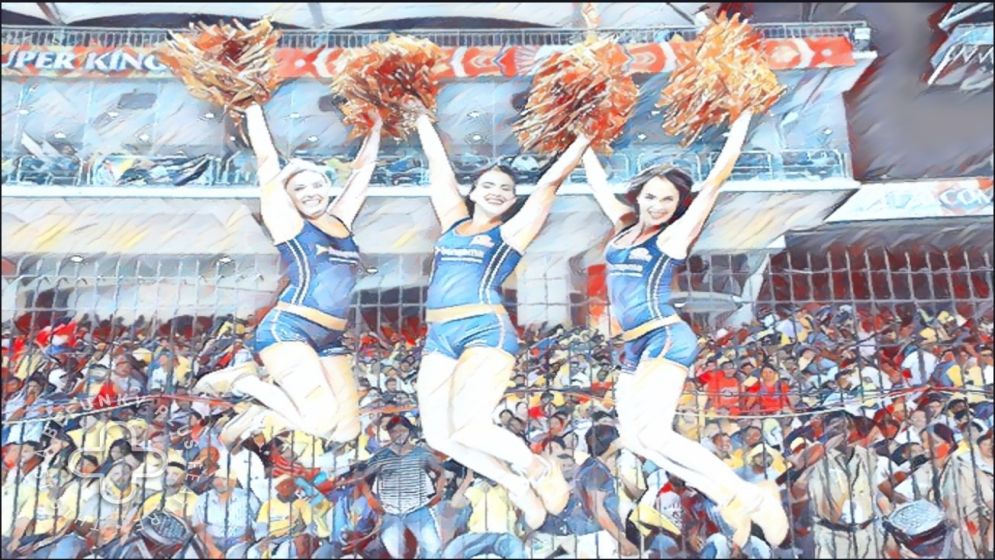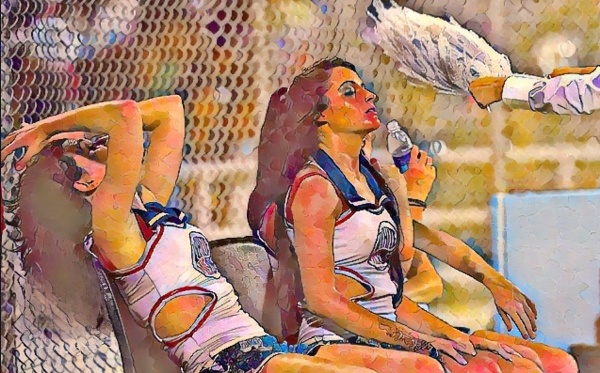IPL and its persisting problem of female objectification

The global sporting landscape, including cricket, is heavily gendered, with the men's team dominating the sport. But perhaps in no other places, this gender imbalance is more amplified than in the Indian Premier League (IPL)-- the world’s most expensive cricket league– which has taken the objectification of women to new heights.
IPL has become a spectacle of excess, with its high stakes, intense pressure, and over-the-top glamor. It's clear that the Board of Cricket Control of India (BCCI) has invested heavily in this cash cow, not only funding the league itself but also the surrounding hype. However, the IPL seems to grow increasingly outlandish with each passing year.
In addition to professional cricketers awkwardly performing Bollywood-style dance routines while endorsing countless products, the IPL seems intent on objectifying women for the entertainment of its viewers. While there's much to be said about the problematic portrayal of women in Indian media, it's disheartening for a lot to see this trend infiltrate a sport that is cherished not just in India, but across the entire subcontinent.
The 2003 World Cup cricket probably marked the first successful fusion of cricket's masculinity with a graceful and glamorous female presence when Star Sports, the primary broadcaster, enlisted actress-turned-presenter Mandira Bedi to co-host post-match analysis with former cricketers. During the tournament, the Indian magazine Outlook featured Bedi on its cover, celebrating women breaking barriers in the traditionally male-dominated realm of sports.

Bedi's rise to fame in the world of cricket however is remembered for her distinct style, characterized by backless blouses, tube tops, and short hair. While her impact on cricket commentary is acknowledged– despite her lack of prior connection to the sport– it cannot be denied that her glamorous appearance contributed to her success. It was clear that her involvement was intended to attract a larger audience by injecting "eye candy" into the sport.
The IPL followed suit, adopting the Mandira Bedi model and started employing glamorous women as anchors in pre- and post-match shows. The problem is, IPL's use of glamorous female presenters has long been contentious, with their perceived lack of cricket knowledge drawing criticism for a number of years, at least up until 2017.
Observers believe that there was a shift in presentation by the female anchor in 2018, as the supposed "only glamorous" presenters were replaced by Isha Guha and Mayanti Langer–women with deeper understanding of cricket, often due to their own playing experience. Unfortunately, even these intellectually capable women are not immune to the demands of the male gaze.
Both Langer and Guha, despite breaking into a field traditionally dominated by Harsha Bhogle and Sunil Gavaskar, must still conform to patriarchal standards of "glamor" and "presentation." They are expected to maintain a certain appearance that caters to the male gaze.
While Langer, coming from a privileged background, can transcend gender constraints in her role as a sports journalist, the same cannot be said for the IPL cheerleaders, who are exploited by the IPL to boost viewership. Formula One recently abandoned its use of "grid girls" and cheerleaders due to their demeaning and sexist nature.

The presence of cheerleaders, mostly white and seemingly chosen for their appearance rather than dancing ability, is problematic in a country grappling with the objectification of women's bodies. It reflects outdated, colonial beauty standards. Given India's rich dance heritage, one would expect more culturally relevant and less overtly sexualized performances from both men and women.
Yet, the IPL persists in employing "exotic" foreigners and women adhering to artificial beauty standards to dance during matches. A tokenistic gesture of inclusivity exists, with one franchise incorporating male cheerleaders, but this fails to address the fundamental issue of the practice's inherent humiliation.
Besides, despite estimates that a third of IPL stadium attendees are female, the league's entertainment seems geared towards a male audience, with a series of gratuitous displays of young, attractive women. These stunts reinforce the sport's existing struggles with issues of sex and race, evident in instances like West Indian cricketer Chris Gayle's harassment of female reporters, Pakistan’s Shahid Afridi's dismissive remarks about women's cricket, and inappropriate questions directed at Isa Guha by fellow male presenters.
Blaming individuals however becomes pointless when the entire system perpetuates such problematic behaviors. Also dismissing this “objectification of females” as harmless fun and games would be a grave mistake.
Popular culture, especially Indian media, significantly influences how women are perceived and treated, not only in India but also in neighboring countries like Bangladesh, where it enjoys widespread viewership. Cricket holds a unique place in the hearts and minds of people in this part of the world, and it's disheartening to witness its degradation.

